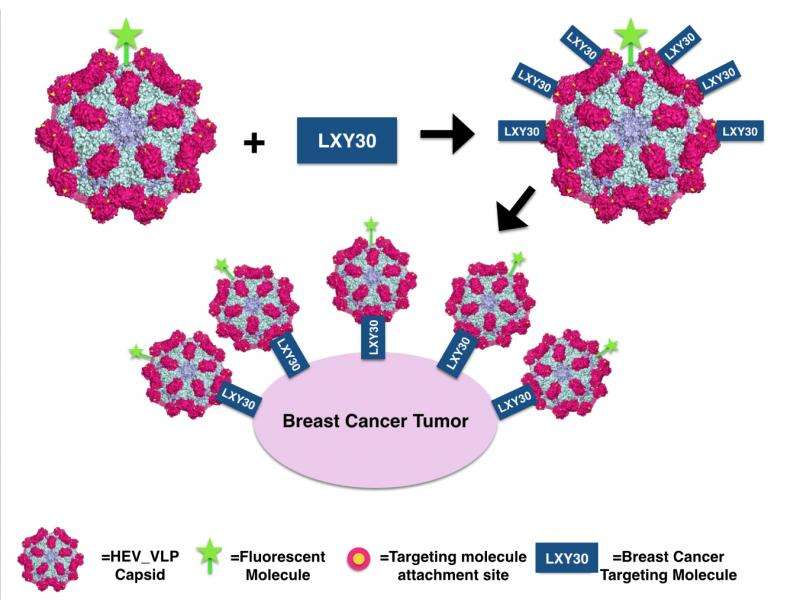Hepatitis virus-like particles as potential cancer treatment

UC Davis researchers have developed a way to use the empty shell of a Hepatitis E virus to carry vaccines or drugs into the body. The technique has been tested in rodents as a way to target breast cancer, and is available for commercial licensing through UC Davis Office of Research.
Hepatitis E virus is feco-orally transmitted, so it can survive passing through the digestive system, said Marie Stark, a graduate student working with Professor Holland Cheng in the UC Davis Department of Molecular and Cell Biology.
Cheng, Stark and colleagues prepared virus-like particles based on Hepatitis E proteins. The particles do not contain any virus DNA, so they can't multiply and spread and cause infections.
Such particles could be used as vaccines that are delivered through food or drink. The idea is that you would drink the vaccine, and after passing through the stomach the virus-like particles would get absorbed in the intestine and deliver vaccines to the body.
But the particles could also be used to attack cancer. Stark and Cheng did some tinkering with the proteins, so that they carry sticky cysteine amino acids on the outside. They could then chemically link other molecules to these cysteine groups.
They worked with a molecule called LXY-30, developed by researchers at the UC Davis Comprehensive Cancer Center, which is known to stick to breast cancer cells. By using a fluorescent marker, they could show that virus-like particles carrying LXY-30 could home in on breast cancer cells both in a laboratory dish and in a mouse model of breast cancer.
Results of the study are published in the journal Nanomedicine.
So perhaps one day, cancer patients might drink their medicine and UC Davis-designed virus-like particles carrying anticancer drugs will home in on their target.
More information: Chun-Chieh Chen et al. Chemically activatable viral capsid functionalized for cancer targeting, Nanomedicine (2016). DOI: 10.2217/nnm.15.207
Information about licensing the technology can be found at: https://techtransfer.universityofcalifornia.edu/NCD/24218.html.
Journal information: Nanomedicine
Provided by UC Davis





















